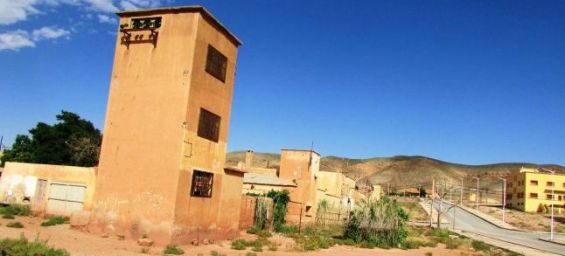Everyone in Midelt knows Mohamed Mouhib. This may be the reason for the widespread solidarity in the apple capital following the destruction of his mineral and fossil museum project.
On Thursday, June 6, local authorities proceeded with the destruction of the museum site that Mohamed Mouhib was setting up in a ruined villa in the former mining village of Mibladen, located about 18 kilometers northeast of Midelt. A doctor, writer, collector, associative actor, and living memory of the region bordering Jbel El-Ayachi, Mouhib planned to move his museum to his own home in Midelt.
The investment had reached about 300,000 dirhams, but the rare pieces that Mohamed Mouhib exhibits in his museum are of inestimable value. They include a three-billion-year-old stromatolite, prehistoric fossils and a variety of rare crystals such as vanadinite and cerussite, all found in Morocco. This is just a tiny part of what Mohamed Mouhib's cave holds, not to mention a goldmine of documented information about such finds in the Kingdom.
24-hour countdown
At a time when Morocco is experiencing a wave of demolitions for various reasons, sometimes even of entire villages, as in the case of Tifnit, south of Agadir, it is tempting to put this umpteenth demolition in the same category as the recovery of public space or the destruction of illegal housing. But Mohamed Mouhib has a completely different opinion. «After completing the necessary formalities to build my project and waiting three months without a response, I acted. This elapsed time is an authorization in itself», he says.

Mohamed Mouhib remembers these formalities as he learned them by heart one by one. First, he purchased the villa in January 2024. At the end of February, he sent a letter to the governor of Midelt explaining his action. «This letter went unanswered, as did several previous letters, including a file explaining the project», notes Mouhib, who adds that he sent the same file to the Ministry of Culture. The only person left was the President of the Museums of Morocco, whom Mohamed Mouhib wanted to contact before the authorities issued a demolition order on June 3. This order, which gave him a 24-hour ultimatum, no more, cited articles 64 and 71 of law 12-90, amended by law 66-12, and a report dated May 18, 2024.
Following the demolition of his museum, Mohamed Mouhib wrote a letter to the Governor on Thursday, June 6, with copies sent to several officials, including the President of the Human Rights Council and the Director of the Royal Cabinet. In this letter, Mouhib denies the possibility of a communication problem with the local authorities and deplores the discriminatory nature of this administrative decision, since another new neighboring project dedicated to the trade of stones and fossils was spared by the authorities. Inequality, targeted action, discriminatory act, etc. These are some of the words from a lexicon omnipresent in this letter expressing the dismay of a lover of fine stones.
Culture in the crosshairs
For Mohamed Mouhib, it is the culture that is targeted by this destruction, contrary to several encouraging opinions expressed in favor of this project by renowned Moroccan anthropologists and former French colonists of Midelt. As for the Ministry of Youth, Culture and Communication, we tried to reach the regional director, Karim Zaouaq, in vain.

Nevertheless, this act in Mibladen must be seen in the wider context of a region where cultural issues are omnipresent but seem to exceed the capacity of public authorities to preserve them. Mibladen and Ahouli, two mining sites abandoned since the 1970s, have already lost a great vocation as tourist sites, where the installations could have attracted enthusiasts of colonial mining history. They are still home to artisanal lead miners who risk their lives every day in inhumane conditions.
As for the Draâ-Tafilalet region, it is well known that its cultural heritage is largely neglected due to rural exodus and insufficient resources to preserve an immense number of ancient sites. But when it comes to new projects that could enrich this region, wouldn't it be wiser to find a compromise ?





 chargement...
chargement...













